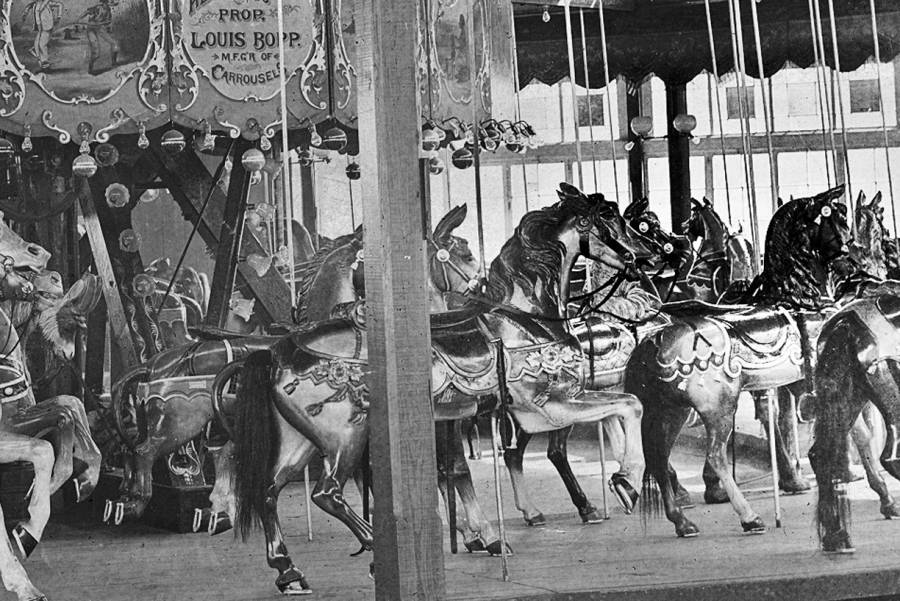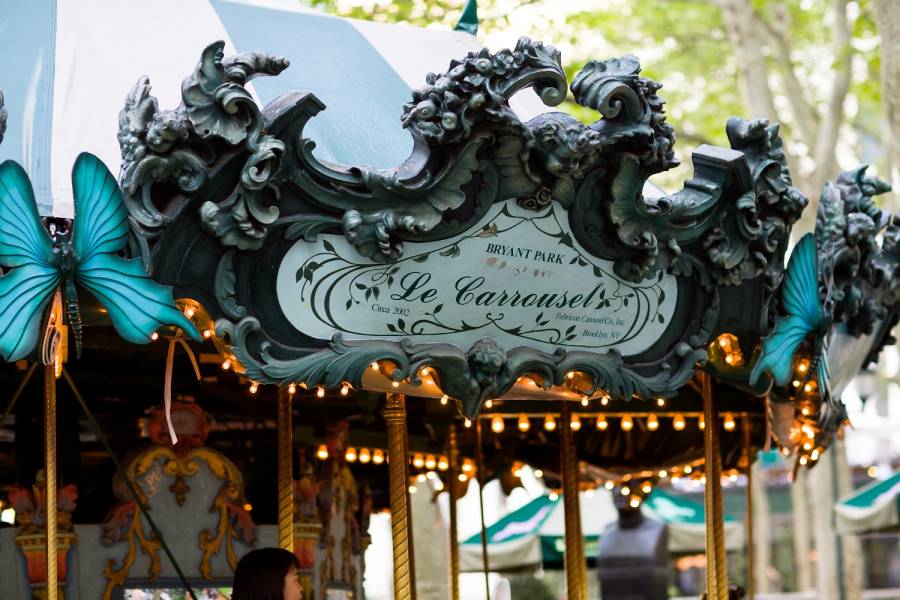History of the Carousel
The word “carousel” has been traced to twelfth-century Arabian games of horsemanship called “carosellos” or “little wars.” The game consisted of riders tossing a small perfumed clay ball from one rider to another.By the 16th century these games spread to France where the events were elaborated; people wore fanciful costumes and engaged in tournaments of drama called “Carrousels.” Eventually the art form became more tactile, as artists began to sculpt crudely shaped horses. In the late nineteenth century American artists broke from European tradition. To the dashing horses, artists added an entire menagerie of elegant animals, often accompanied by flowers, bells, plump cherubs, and flashing mirrors.

Le Carrousel in Bryant Park, specially created to complement the park’s French classical style, is an homage to both European and American traditions. Fabricon Carousel Company, whose artists designed and created Le Carrousel, was based in Brooklyn, NY, and has hundreds of other installations as far away as China and as close as Riverbank State Park on the Upper West Side of Manhattan.
